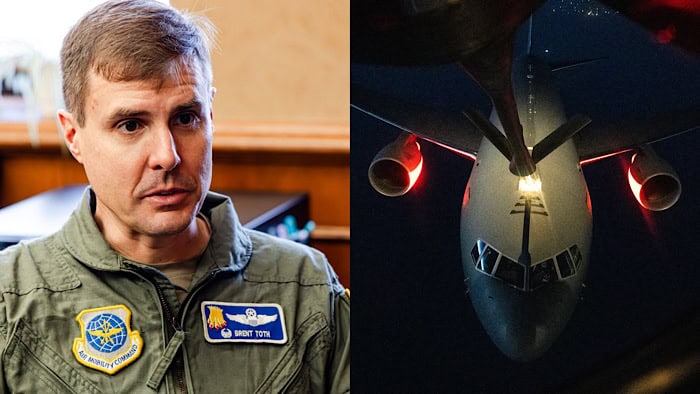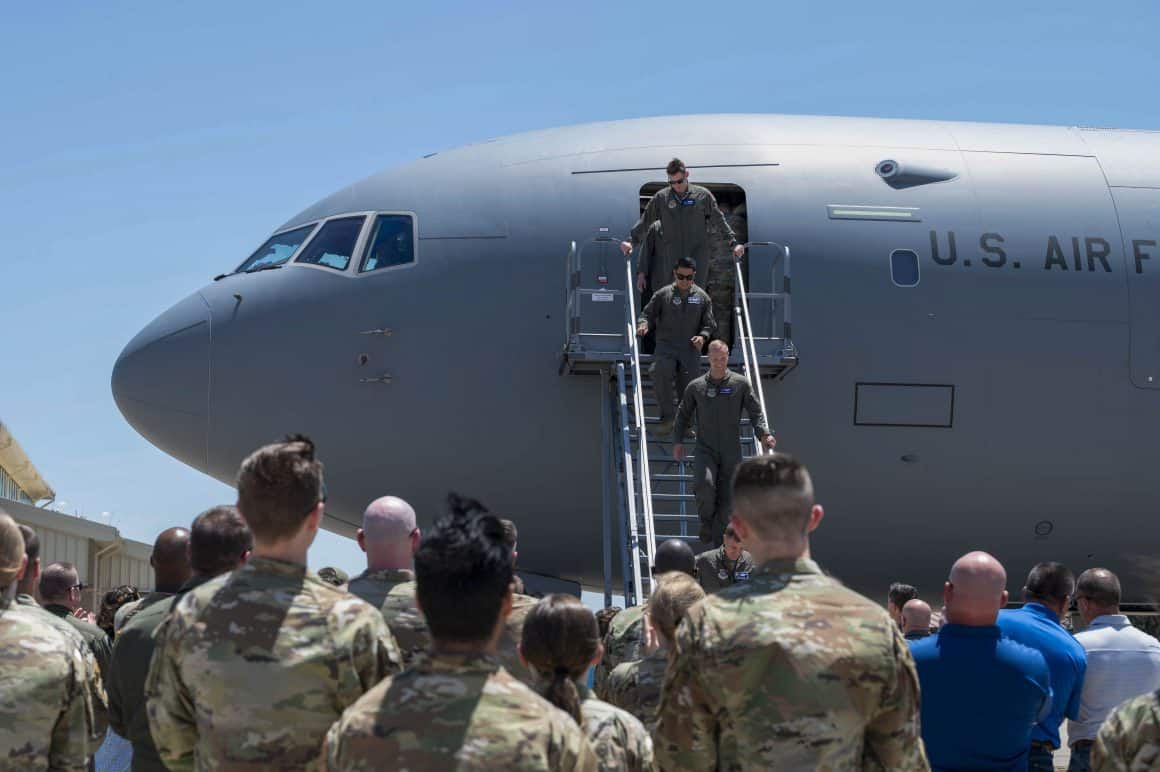Recently, we visited the 22nd Air Refueling Wing at McConnell AFB for an up-close look at America’s newest tanker, the KC-46 Pegasus. This past summer, one of their crews flew the first-ever nonstop Pegasus westbound circumnavigation endurance flight. We teamed up with Forbes journalist Jim Clash and sat down with Col Brent Toth for a chat about it, the commander who led the record 45-hour flight around the world.
The mission, Project Magellan, was flown from McConnell from 29 June to 1 July 2024 and took months to plan.
The airmen at McConnell are writing the book on the KC-46. They are the plane’s main operating base number one, tasked with developing and advancing KC-46 capabilities.
Why fly a Pegasus 45 straight hours non-stop around the world?
America’s refueling tankers are the backbone of our global air superiority and dominance, and the “Maximum Endurance Operation” Toth led proved the Pegasus can surge personnel, supplies and planes for the Joint Force, anywhere in the world at any time.

“We proved that we could take off and go anywhere in the world on a complex combat mission, refueling a variety of aircraft along the way – other tankers, cargo planes, fighter jets and bombers,” said Toth. “45 hours is the longest anyone from Air Mobility Command has been on a plane.”
As they flew non-stop around the world, Toth and his Pegasus crew refueled B-2 stealth bombers, C-17 Globemaster III airlifters, another KC-46, and even F-15E Strike Eagles over the Middle East who were flying combat sorties over Iraq.

Max-Endurance Operations
“It was a max-endurance operation which allowed for two intermittent air crews on one plane functioning for 48 hours. Flying for 45, we got pretty close to that max. We also collected a lot of the medical data about the crew we can study for future flights.“
Previously, 3 pilots could fly as an ‘augmented’ crew for up to 24 hours. Moving forward, AMC is looking to have a crew of 4 pilots operating for up to 48 hours. Project Magellan proved it can be done with the Pegasus.

As Toth stated, recording data on the health of the crew during the mission was a high priority.
“Goals for this flight were to see the combined capabilities of a modern tanker and augmented crews, pushing the brink of human performance,” said Capt. Jacob Heyrend, 349th Air Refueling Squadron flight surgeon who was on the mission. “The final goal I had for the flight was to maintain crew, flight and mission safety and health as the aeromedical element.”
“We showcased not only the unmatched endurance of the KC-46 aircraft, but also the incredible resilience and professionalism of our aircrew,” said Col. Cory Damon, 22nd ARW commander, who was onboard the final tanker refueling the KC-46.
USAF is buying 179 KC-46s, and will soon decide which base will be the hub
“This mission was a true test of our capabilities and a shining example of the critical role our tankers play in providing fuel and support to the Joint Force. I’m incredibly proud of our team’s achievement in pushing the boundaries of what our tankers and their crews can do, and I have no doubt that this historic mission will serve as a foundation for future maximum endurance operations and further solidify our position as a key enabler of global power projection.”

The Air Force intends to buy 179 of the tankers from Boeing, under a $4.9 billion contract. They are currently considering 7 bases to be the hub for the KC-46.
The USAF will make that decision by 2027, and the first of 8 aircraft are scheduled to arrive in 2031.
